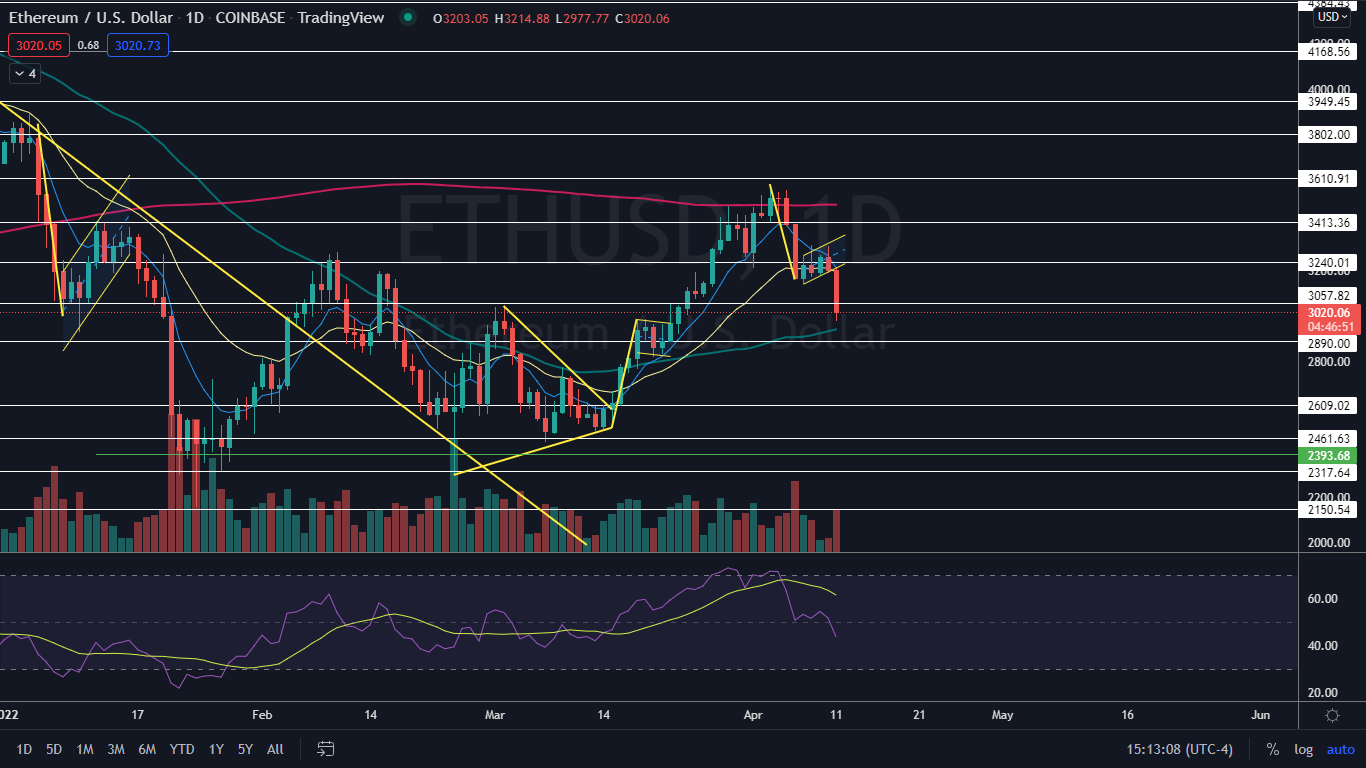
Ethereum (CRYPTO: ETH) was falling over 5% lower on Monday, after making a clean break down from a bear flag pattern Benzinga called out on Saturday.
The break down from the pattern further confirmed the crypto is trading in a larger downtrend, which occurs when a stock consistently makes a series of lower lows and lower highs on the chart.
The lower lows indicate the bears are in control, while the intermittent lower highs indicate consolidation periods. Traders can use moving averages to help identify an uptrend, with descending lower timeframe moving averages (such as the eight-day or 21-day exponential moving averages) indicating the stock is in a steep shorter-term downtrend and descending longer-term moving averages (such as the 200-day simple moving average) indicating a long-term downtrend.
A stock often signals when the lower low is in by printing a reversal candlestick such as a doji, bullish engulfing or hammer candlestick. Likewise, the lower high could be signaled when a doji, gravestone or dragonfly candlestick is printed. Moreover, the lower lows and lower highs often take place at resistance and support levels.
In a downtrend the "trend is your friend" until it’s not and in a downtrend, there are ways for both bullish and bearish traders to participate in the stock:
- Bearish traders who are already holding a position in a stock can feel confident the downtrend will continue unless the stock makes a higher high. Traders looking to take a position in a stock trading in a downtrend can usually find the safest entry on the lower high.
- Bullish traders can enter the trade on the lower low and exit on the lower high. These traders can also enter when the downtrend breaks and the stock makes a higher high, indicating a reversal into an uptrend may be in the cards.
Want direct analysis? Find me in the BZ Pro lounge! Click here for a free trial.
The Ethereum Chart: Ethereum’s downtrend began on April 3, when the crypto reached a high of $3,581.60 and reversed course. The most recent lower high was printed near the $3,310 level on Friday and Sunday, and the most recent confirmed lower low was created on April 7 at $3,240.01. It’s not yet known whether Monday’s low-of-day will act as the next lower low in the pattern because additional 24-hour candlesticks will be needed for confirmation.
- If Ethereum closes the 24-hour trading day near its low-of-day price, it will print a bearish Marubozu candlestick, which could indicate lower prices will come again on Tuesday. If bulls come in and prop the crypto up, however, to close the trading session above the $3,060 level, Ethereum will print a hammer candlestick, which could indicate a bounce to the upside is in the cards.
- Ethereum was plunging lower on higher-than-average volume, which indicates there is a high level of interest from bearish traders and that bullish traders are fearful. As of midafternoon, Ethereum’s 24-hour volume on Coinbase was measuring in at about 177,500 compares to the 10-day average of 152,345.
- The bearish action is likely to cause the eight-day exponential moving average (EMA) to cross below the 21-day EMA on Tuesday, which is bearish. To avoid the crossing of the EMAs, Ethereum would have to regain support at the eight-day EMA in short order. Ethereum may find support at the 50-day simple moving average and provide a bounce play at that level, which is currently trending near the $2,939 price point.
- Ethereum has resistance above at $3,057.82 and $3,240.01 and support below at $2,890 and $2,609.

See Also: Coinbase Halts Buy Orders For Bitcoin, Dogecoin In India







